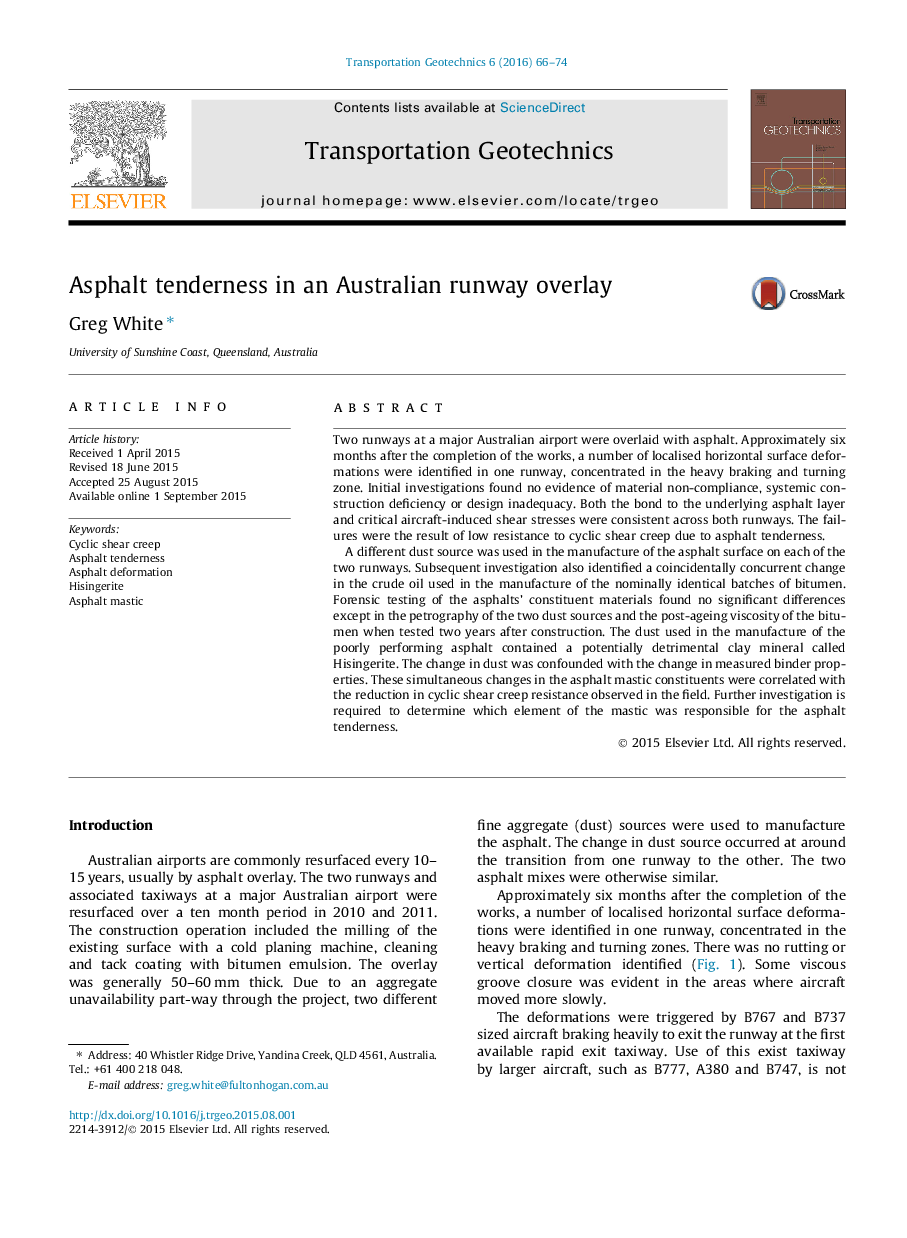| Article ID | Journal | Published Year | Pages | File Type |
|---|---|---|---|---|
| 310305 | Transportation Geotechnics | 2016 | 9 Pages |
Two runways at a major Australian airport were overlaid with asphalt. Approximately six months after the completion of the works, a number of localised horizontal surface deformations were identified in one runway, concentrated in the heavy braking and turning zone. Initial investigations found no evidence of material non-compliance, systemic construction deficiency or design inadequacy. Both the bond to the underlying asphalt layer and critical aircraft-induced shear stresses were consistent across both runways. The failures were the result of low resistance to cyclic shear creep due to asphalt tenderness.A different dust source was used in the manufacture of the asphalt surface on each of the two runways. Subsequent investigation also identified a coincidentally concurrent change in the crude oil used in the manufacture of the nominally identical batches of bitumen. Forensic testing of the asphalts’ constituent materials found no significant differences except in the petrography of the two dust sources and the post-ageing viscosity of the bitumen when tested two years after construction. The dust used in the manufacture of the poorly performing asphalt contained a potentially detrimental clay mineral called Hisingerite. The change in dust was confounded with the change in measured binder properties. These simultaneous changes in the asphalt mastic constituents were correlated with the reduction in cyclic shear creep resistance observed in the field. Further investigation is required to determine which element of the mastic was responsible for the asphalt tenderness.
